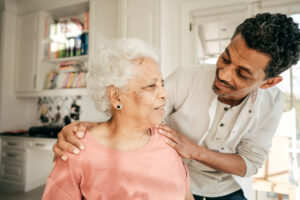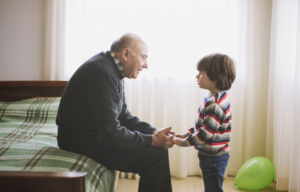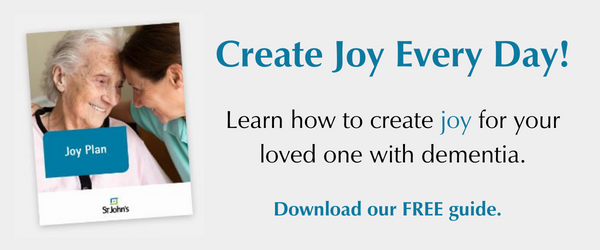All people need sensory stimulation to understand the world around them. Information is transferred into our brains as humans through our senses: sight, sound, touch, smell, taste, and movement (kinesthetic). Ensuring that the level of stimulation in any given situation aligns with the needs of people relates to environmental factors as well as personal preference. If a person has too much stimulation, it can lead to shutting down or retreating from social interaction. Too little stimulation and a person may lose interest in surroundings or go to sleep. Previous research studies have also shown that long-term deprivation of stimulation can severely impact well-being and health.
Why Sensory Rooms Help People with Dementia
People with Alzheimer’s disease or other forms of dementia, because of their dementia symptoms, need to be offered help in engaging in multi-sensory stimulation through sensory activities and sensory therapies worked into their everyday activities, especially in late stages. Their understanding of the world becomes challenged, especially with severe dementia, and the use of sensory therapy, as part of dementia care, can produce feelings of comfort.
Creating Your Dementia Sensory Room
When planning for your multi-sensory room or building a multisensory environment throughout the home, think about the different senses that you wish to stimulate. Working step by step within the parameters of the different senses can help you easily build your multi-sensory environment and help your loved one to trigger memories that are a positive experience and minimize aggressive behavior.
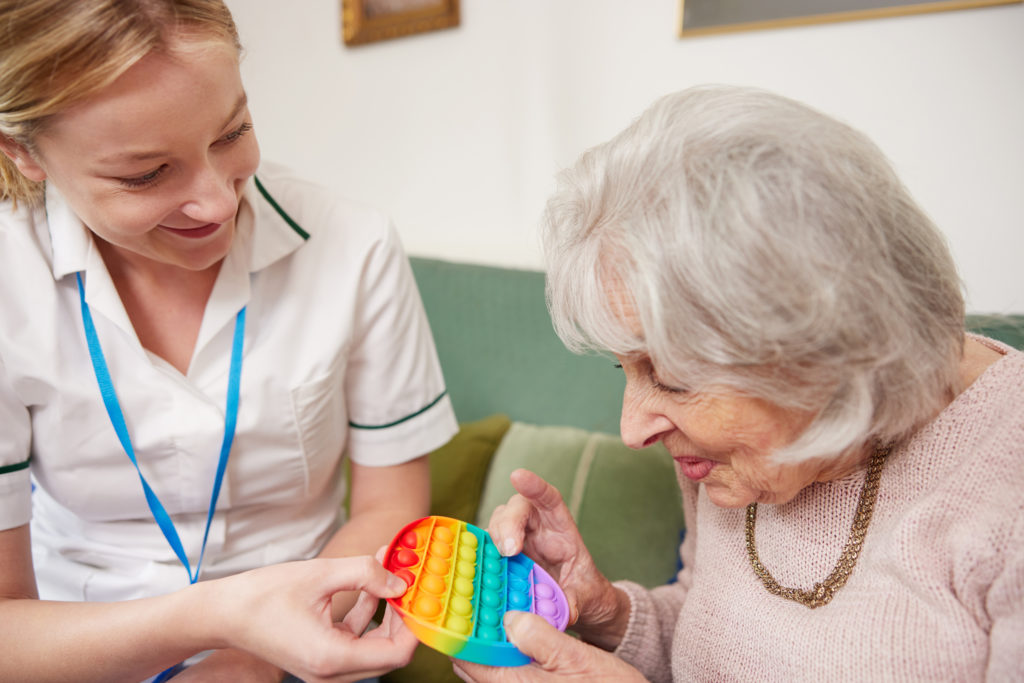
For dementia caregivers providing care at home, creating multi-sensory environments in the form of your loved one’s own sensory room could have a significant positive impact and be an important part of creating meaningful activities that bring joy every day. The benefits of sensory room therapy, have been shown in those with intellectual disabilities and developmental disabilities, as well as dementia patients in care homes.
Sound: Auditory stimulation is an important part of Snoezelen therapy and traditional music therapy. It is also effective for mood enhancement, cognition stimulation, and relaxation. Use of water features or soothing natural sounds, classical music, or music from a specific era (for reminiscence therapy) playing on a smart device, are all effective. Musical instruments, particularly percussion instruments, can encourage participation in the experience by those with vascular dementia or other forms. Interesting things around the house such as a water bottle filled with dry ice, boxes, Tupperware with lids can be used to make instruments.
Sight: Soft lighting effects in the sensory room or throughout the home can be selected to create an experience of being safe, comfortable, and secure. Do not use harsh overhead lighting but rather soft, indirect sources of illumination. Color washed walls can be easily made with different materials such as sparkling netting behind some soft textiles. Use of a dimmer switch can enable adjustment of lighting to stimulate a more therapeutic environment based on individual preference. Fiber optics in the form of strands, glowing balls, curtains, or bubble tubes provide functional performance as well. Lighting effects that cause optical illusions should be avoided.
Taste: Familiar items of food can evoke memories as well as emotions. Taste is highly personal and dietary restrictions in order to avoid choking must be tailored to the individual. Soft creamy textures such as chocolate, ice cream or sherbet, cotton candy, etc. can be soothing.
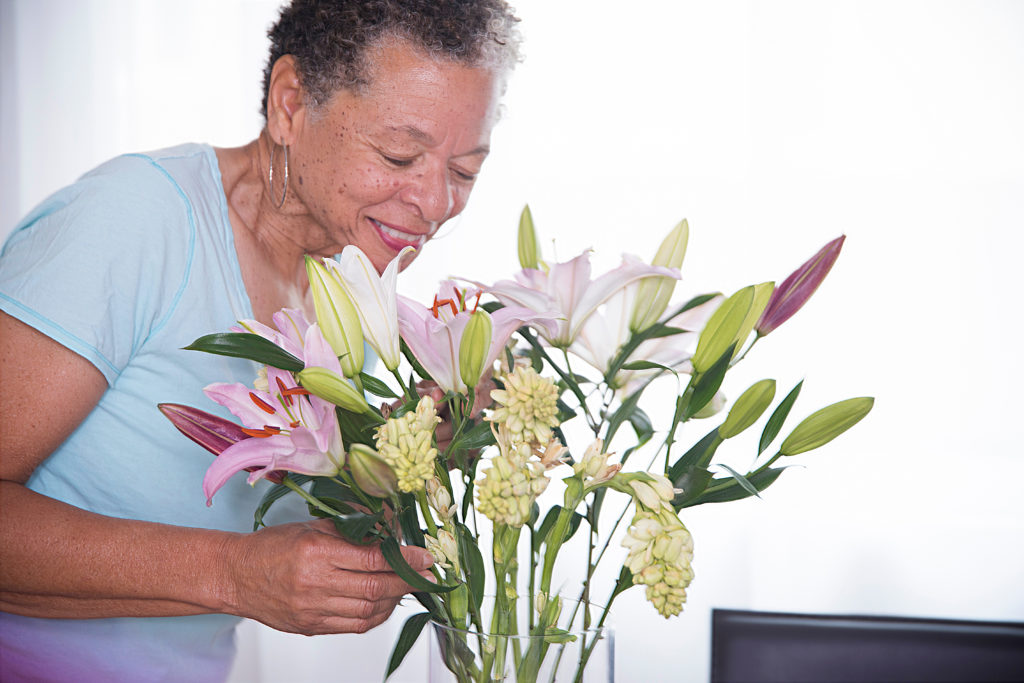
Smell: Essential oils or aroma diffusers are an effective way to create background smells in your sensory room or throughout the home. Use of a Bespoke smelling session can be an everyday activity to use in multisensory spaces. To execute: prepare smell pots with lids and some cotton or wool filled with spices such as cloves or cinnamon; herbs such as mint leaves or lemon basil; or pleasant and fragrant liquids such as lemon juice or lavender oil; or citrus zest. Tailor the smelling session to the preferences of your loved one; if he/she did not like a certain type of smell in the past, avoid using it for this multisensory experience.
Touch: Tactile objects and sensory products used in occupational therapy such as fabric pillows made with fur, velvet, silk, or fleece; sensory blankets with pockets; or playing with different media like sand, water, jelly, flour, or play dough; are effective for stimulating the sense of touch. Familiar everyday objects found around the home (hairbrush, tissue paper, squares of carpet, etc.) can also supply a “play” station set up for tactile stimulation. Giving your loved one a hand massage or applying deep pressure to focal parts of his/her body in the short term can also be utilized.
Movement: Physical activity promotes the vestibular and kinesthetic senses especially when targeting the sensory side of that activity. Moving our bodies can either stimulate or relax us. Daily activities like stretching and walking as well as purposeful movement like gripping a stress ball, kneading dough, clapping hands, or rocking in a chair (that is equipped with safety measures), can all be used for this type of therapy.
Sensory Rooms Versus Medical Intervention
Use of sensory rooms and sensory equipment has been shown to be an effective strategy over pharmacological interventions for addressing challenging behaviors as well as contributing to the wellbeing of those with dementia.
If creating an entire sensory room in your home seems like an overwhelming project, start small by setting up sensory stimulating activities focused on one of the senses.
If you have any questions about sensory rooms or effective multisensory strategies, submit them to Ask Mimi.

